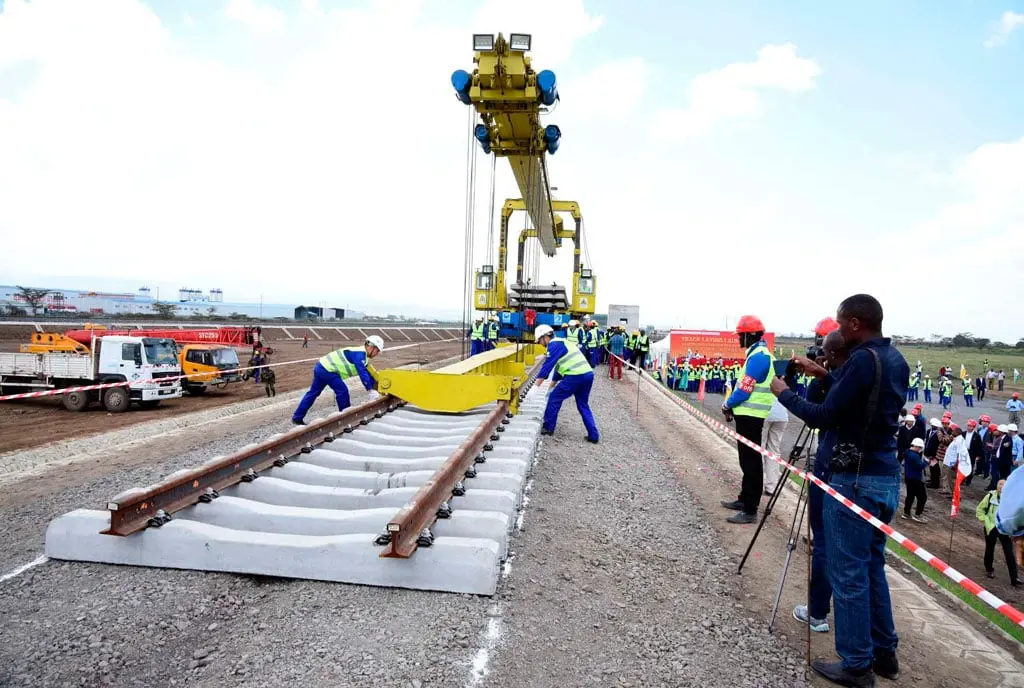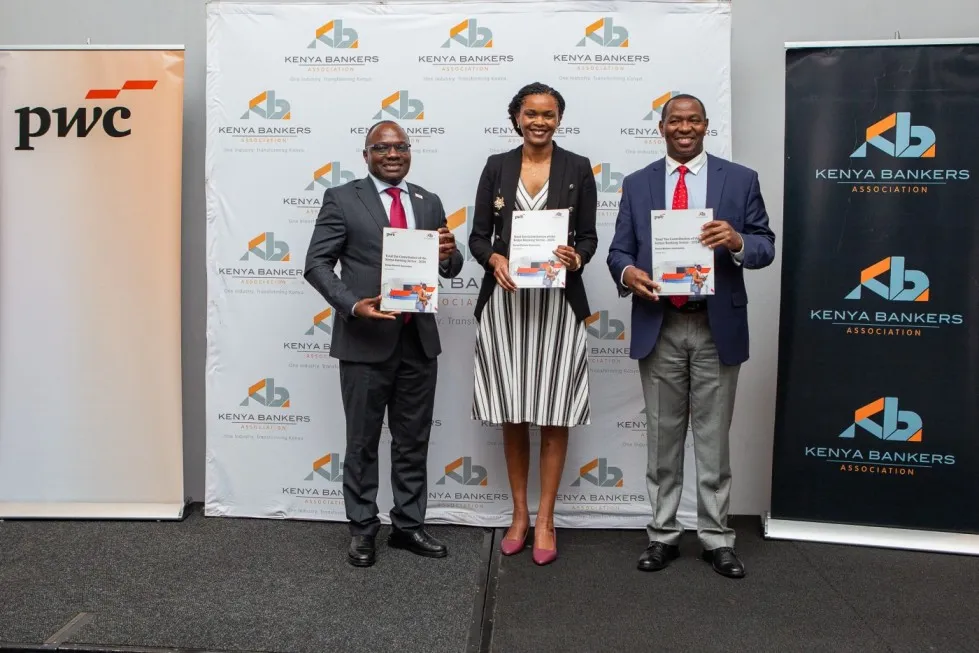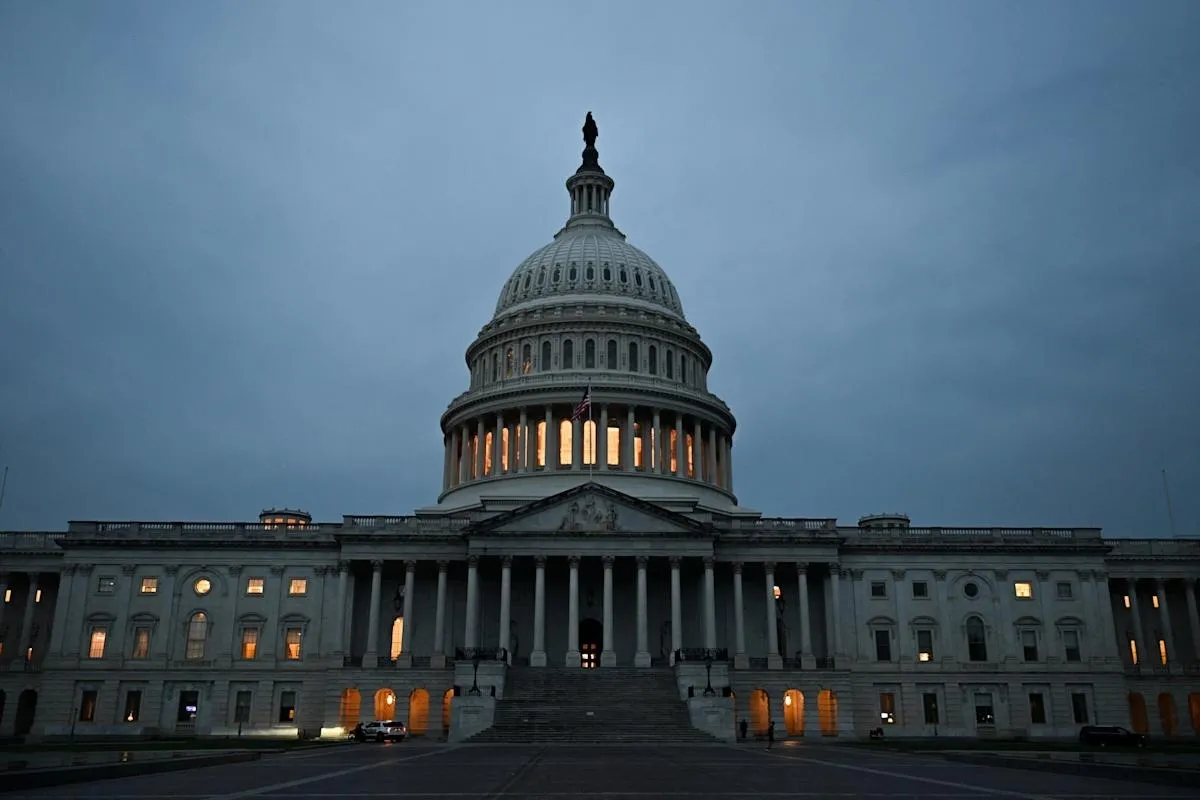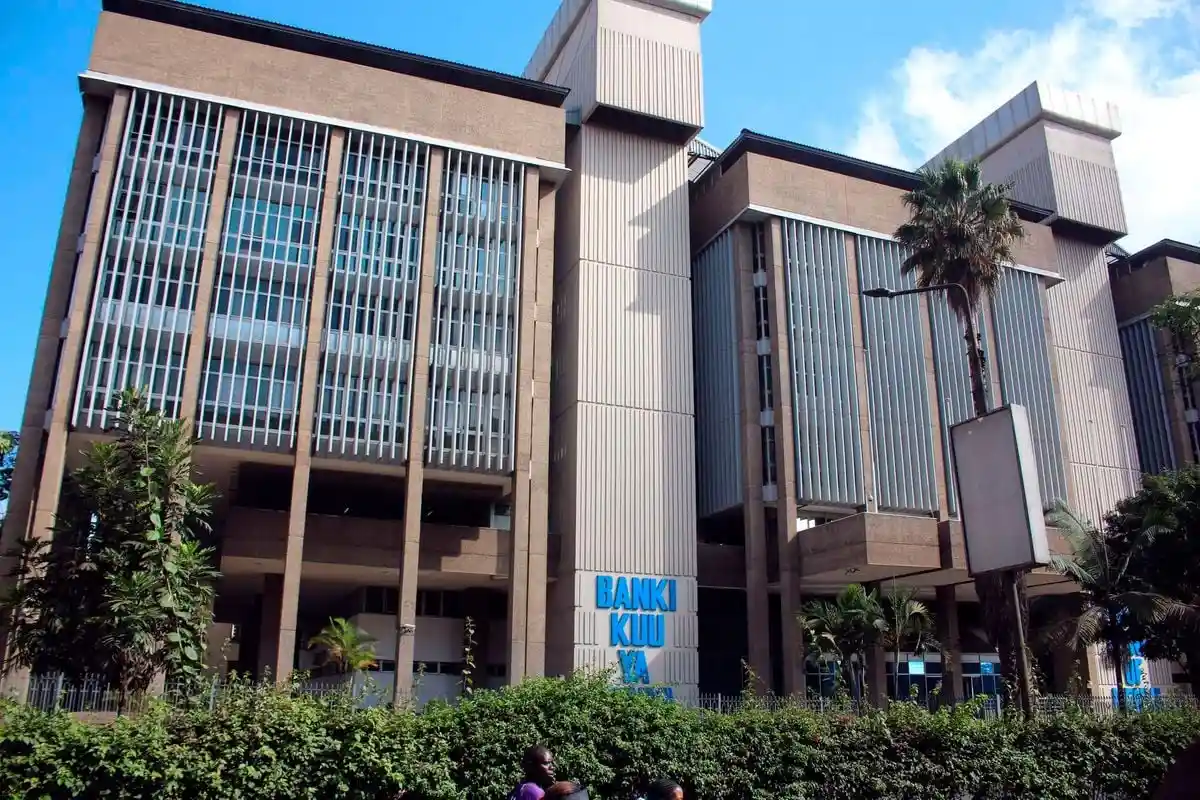Local suppliers are pushing for at least 40 percent of the project contracts – with a target of retaining $500 million – from the first phase of Uganda’s flagship standard gauge railway, as construction is expected to begin in April 2026 following the signing of a €2.7 billion contract with Turkish firm Yapı Merkezi.
Uganda’s ambitious Standard Gauge Railway (SGR) project represents a transformative infrastructure initiative that will modernize the country’s transport network while creating unprecedented opportunities for local businesses. After years of delays and financing challenges, the project has finally gained momentum, positioning Uganda to join its regional neighbors in developing a modern railway network that will reshape East African trade and economic integration.
One decision can change your entire career. Take that step with our Online courses in ACCA, HESI A2, ATI TEAS 7, HESI EXIT, NCLEX-RN, NCLEX-PN, and Financial Literacy. Join Serrari Ed and start building your brighter future today.
Project Overview and Strategic Significance
The 272-kilometre Malaba-Kampala railway project forms the cornerstone of Uganda’s broader railway modernization strategy. President Yoweri Museveni officially launched construction during a ceremony in Tororo district on November 21, 2024, describing it as a “significant moment in our journey towards economic transformation, improving regional integration and advancing the aspirations of our people.”
The railway line will traverse ten districts including Tororo, Jinja, and Mukono on its journey from the Kenyan border to Uganda’s capital. The project represents one of the largest infrastructure investments in Uganda’s history, with a contract value of €2.7 billion ($3.16 billion), making it comparable in scale to the multibillion-dollar oil and gas initiatives in the Lake Albert basin.
The strategic importance of the project extends beyond national borders. The SGR is a critical component of the East African Community Railway Master Plan and the Northern Corridor Integrated Projects Railway Network, which aims to connect Uganda to the Port of Mombasa through Nairobi, and eventually extend to South Sudan, Rwanda, and Democratic Republic of Congo.
Local Content Policy and Economic Benefits
A key distinguishing feature of Uganda’s SGR project is its emphasis on local content and community participation. Project coordinator Perez Wamburu emphasized that “local content is not just a slogan, it is a work programme with clauses, milestones, and measurement.” This approach represents a significant departure from traditional infrastructure projects where local participation was often minimal.
The 40% local content requirement is designed to ensure that Ugandan businesses capture substantial value from the project. With a target of retaining $500 million from the first phase alone, local suppliers are positioned to benefit significantly from contracts in cement, steel, logistics, labor, and various other services.
Waiswa Bageya, permanent secretary in the Ministry of Works and Transport, explained that local content means “leveraging this project to grow home industries’ capacity.” The ministry has identified that Uganda has the capacity to supply cement, aggregates, and even reinforced steel and steel products that meet international standards, provided procurement policies are aligned with local industrial capacity.
The 272-kilometre main line project with 67 kilometres of sidings and 30.4 kilometres of branches will require at least 100 tonnes of steel, presenting substantial opportunities for local manufacturers. However, private sector players have expressed concerns about whether any single local firm has the capacity to supply such large quantities without forming joint ventures, which may compromise quality.
Lessons from Oil and Gas Sector Experience
Uganda’s approach to local content in the SGR project draws heavily from lessons learned in the country’s oil and gas sector development. James Musherure Rujoki, senior national content officer at the Petroleum Authority of Uganda (PAU), provided insights from the petroleum sector’s experience with local participation.
Since the development of Uganda’s oilfields and the East African Crude Oil Pipeline (Eacop) kicked off in 2023, operators TotalEnergies, China National Offshore Oil Corporation, and Eacop Ltd have awarded contracts worth $7.4 billion, of which $2.3 billion has gone to Ugandan companies.
Rujoki cited Nigeria’s experience as a model for local content development. “Let’s look at Nigeria, which, until 2010, had only 5 percent local participation in oil projects. They introduced local content policy and right now have moved close to 50 percent,” he said, advising that where capacity is lacking, players should form joint ventures to increase their chances.
This experience suggests that Uganda’s 40% target for the SGR project, while ambitious, is achievable with proper planning and strategic partnerships. The timing of the railway project provides an opportunity for Ugandan companies to apply lessons learned from the oil and gas sector’s more advanced local content implementation.
Regional Context and Competitive Dynamics
Uganda’s SGR project comes at a time when the broader East African railway network is experiencing significant development. The regional context provides both opportunities and challenges for Uganda’s railway development.
Kenya opened its 579 km Nairobi-Mombasa Standard Gauge Railway in 2017, creating a modern transport link between East Africa’s premier port and the regional hub of Nairobi. However, Kenya’s extension from Naivasha to Malaba has faced financing challenges, creating a gap in the intended regional network.
Tanzania has made significant strides with its own SGR network, officially launching passenger train services connecting Dar es Salaam with Dodoma. Tanzania’s approach has been particularly notable for diversifying funding sources and avoiding excessive dependence on Chinese financing, working instead with Turkish and Portuguese contractors alongside multiple funding partners.
The regional competition has intensified as countries seek to position themselves as preferred transit routes for landlocked neighbors. Tanzania’s SGR aims to connect Rwanda, Burundi, and the Democratic Republic of Congo to the coast through the Central Corridor, while Kenya’s Northern Corridor has traditionally served Uganda and other landlocked countries.
Technical Specifications and Standards
Uganda’s SGR will be built to American Railway Engineering and Maintenance-of-Way Association (AREMA) standards, making it the second country in East Africa to deploy these standards after Tanzania. This differs from Kenya’s approach, which follows China Class 1 standards, but officials have assured that seamless connectivity is guaranteed through system harmonization.
The railway will feature 1,435 mm gauge, electrification, UIC60 rails, 25-tonne axleload, and design speed of 120 km/h. These specifications ensure compatibility with modern international railway standards while providing capacity for both passenger and freight services.
The project includes sophisticated infrastructure elements, including a 2-kilometer tunnel in Mbuya designed to avoid demolishing existing structures, demonstrating the project’s commitment to minimizing disruption to established communities and businesses.
Build the future you deserve. Get started with our top-tier Online courses: ACCA, HESI A2, ATI TEAS 7, HESI EXIT, NCLEX-RN, NCLEX-PN, and Financial Literacy. Let Serrari Ed guide your path to success. Enroll today.
Economic Impact and Cost-Benefit Analysis
The economic benefits of the SGR project extend far beyond the immediate construction phase. President Museveni emphasized that transporting a 20-foot container from Mombasa to Kampala by train will cost 50% less than by road, with transport time reduced from 14 days to 24 hours.
Current transport costs highlight the potential savings. A 40-foot container costs $3,500 from Mombasa to Kampala by road compared to $1,500 by rail when the standard gauge railway is operational. This cost reduction will significantly improve Uganda’s competitiveness in international trade and reduce the cost of doing business.
The project’s capacity specifications are impressive. The railway is designed to handle 25 million tonnes of freight annually, providing substantial capacity for both domestic and transit trade. This capacity will support Uganda’s growing economy while serving as a critical link for landlocked neighbors seeking efficient access to seaports.
Financing Structure and Implementation Model
Uganda’s financing approach for the SGR project represents a significant departure from earlier plans that relied heavily on Chinese funding. The government terminated its contract with China Harbour Engineering Company (CHEC) in January 2023 after eight consecutive years of “failure to execute,” largely due to the Chinese lender’s unwillingness to approve financing until Kenya finalized funding for its Naivasha-Malaba section.
The current project will be financed through a combination of domestic resources and development partners, following an Engineering, Procurement, and Construction Turnkey (EPC/T) model. This approach is designed to ensure timely completion while minimizing risks that will be borne by the contractor.
The government has already released $75 million to Turkish contractor Yapı Merkezi to begin preliminary work, including geophysical surveys, soil testing, and other preparatory activities. Additional funding will be released as construction progresses, demonstrating the government’s commitment to maintaining project momentum.
Infrastructure Development and Utility Coordination
The SGR project involves complex coordination with existing infrastructure and utility providers. The project team is working with the National Water and Sewerage Corporation (NWSC), UMEME, and other entities to relocate utilities that traverse the SGR line. Seventeen conflict points with UETCL will require relocation of transmission lines through either underground cables or line shifting.
Electricity infrastructure development is proceeding in parallel with railway construction. The project, in collaboration with UETCL, has surveyed and designed extensions from UETCL 132kV lines to railway traction substations. Approximately 60 kilometers of 132kV high-voltage lines will be extended to the planned five traction substations at Tororo, Buwoola, Iganga, Nyenga, and Namanve.
Land acquisition has progressed significantly, with 100 kilometers of the 60-meter corridor already acquired and compensated. The Resettlement Action Plan covers 82% of the route, with compensation to project-affected persons reaching Shs 300 billion ($80 million), nearly half of the Shs 610 billion allocated for this purpose.
Regional Integration and Cross-Border Coordination
The success of Uganda’s SGR project depends heavily on coordination with neighboring countries, particularly Kenya. Both countries have signed bilateral agreements regarding connectivity at the border and locomotive flow between the two countries. The bridge over River Malaba will be built to facilitate seamless operations.
Kenya is expected to begin work in January 2025 on the section of its standard gauge line that will connect with the Ugandan line at Malaba. Uganda’s Minister of Transport & Works General Katumba Wamala confirmed that “the two countries have agreed on the timelines of the two projects to ensure seamless movement of trains from Kampala to Mombasa.”
The operational model for the regional network has been carefully planned. Uganda and Kenya have agreed to use one operator on the Mombasa-Kampala SGR route, with Uganda signing a memorandum of understanding with CHEC to undertake operations in the interim while the country builds its own capacity.
Challenges and Risk Mitigation
Despite the positive momentum, the SGR project faces several significant challenges that require careful management. The Ministry of Works and Transport currently has supplier arrears worth up to Shs 2 trillion ($562.8 million), which constrains business operations for companies with limited capital backup.
The Uganda Manufacturers Association has identified delayed payments as “the biggest bottleneck that contractors face, even for World Bank-funded projects.” This challenge could impact local suppliers’ ability to participate effectively in the SGR project, particularly smaller companies that lack substantial capital reserves.
Private sector concerns about capacity and quality standards present another challenge. While the government believes local companies can meet international standards, private sector players worry that no single local firm can supply large quantities of materials like 100 tonnes of steel without forming joint ventures that might compromise quality.
Environmental and social safeguards require ongoing attention. The project has prepared comprehensive environmental strategies and conducted earthquake hazard assessments along the Malaba-Kampala route. Mineralogy assessment studies have been completed to ensure the railway doesn’t traverse areas with high mineral potential that might require future diversions.
Long-term Vision and Network Expansion
The Malaba-Kampala line represents just the first phase of Uganda’s comprehensive railway development plan. The long-term vision includes the 465 km Northern line from Tororo to Gulu and Nimule at the South Sudan border, the Western line from Kampala to Kasese and Mpondwe on the DR Congo border, and the Southern line from Bihanga to Mirama Hills on the Rwandan border.
The entire 1,724-kilometer SGR network is estimated to cost approximately $12.8 billion when completed. This comprehensive network will position Uganda as a central hub in the East African transport system, connecting multiple countries to efficient railway transport and reducing dependence on costly road transport.
President Museveni has emphasized the broader economic philosophy behind the railway investment. “Why should one vehicle transport a single person when a train can transport 1,000 people at once? Fewer vehicles on the road mean less congestion and better efficiency,” he explained during the project launch.
Industry Development and Skills Building
The SGR project is expected to catalyze broader industrial development in Uganda. Industry lobby groups have noted that potential suppliers have enhanced the quality of their products to match global standards and are better organized now than they were a decade ago when the project was initially conceived.
The delay in project implementation, while frustrating, may have provided unexpected benefits. Local suppliers have had time to upgrade their capabilities, understand international quality standards, and develop the organizational capacity needed to participate effectively in large-scale infrastructure projects.
The project also aligns with efforts to develop railway expertise in the region. The East African Community has identified the need to establish centers of railway excellence in Africa, with institutions like Kenya Railways’ Railway Training Institute in Nairobi being evaluated for potential development as regional training centers.
Future Prospects and Regional Competition
As Uganda moves forward with its SGR project, the country enters a competitive regional environment where transport infrastructure determines economic opportunities. Tanzania’s success with its electrified SGR system has demonstrated the potential for railway infrastructure to drive economic transformation.
The regional railway network’s completion could significantly boost intra-regional trade, which currently stands at 28% but has potential to reach levels achieved by other regions like Europe, Asia, and Latin America, where intra-regional trade exceeds 60%.
Uganda’s position at the heart of East Africa gives it unique advantages in this regional competition. Once completed, the SGR network will connect Uganda to multiple neighbors and provide efficient access to both the Indian Ocean through Kenya and potentially the Atlantic Ocean through the Democratic Republic of Congo.
Conclusion and Outlook
Uganda’s $3 billion Malaba-Kampala railway project represents more than just infrastructure development; it embodies the country’s commitment to economic transformation and regional integration. The emphasis on 40% local content ensures that Ugandan businesses and communities will benefit directly from this transformative investment.
The project’s success will depend on effective coordination between government, contractors, and local suppliers, as well as continued collaboration with regional partners. The lessons learned from Uganda’s oil and gas sector experience provide a valuable foundation for maximizing local participation and ensuring quality standards.
As construction begins in earnest following years of planning and preparation, the SGR project positions Uganda to join the ranks of countries with modern, efficient railway systems that can drive economic growth and regional connectivity. The project’s completion will mark a significant milestone in Uganda’s journey toward becoming a middle-income country while strengthening East Africa’s position in global trade networks.
The success of Uganda’s local content strategy could serve as a model for other infrastructure projects across Africa, demonstrating that large-scale development initiatives can be designed to maximize local benefits while meeting international quality and efficiency standards.
Ready to take your career to the next level? Join our Online courses: ACCA, HESI A2, ATI TEAS 7 , HESI EXIT , NCLEX – RN and NCLEX – PN, Financial Literacy!🌟 Dive into a world of opportunities and empower yourself for success. Explore more at Serrari Ed and start your exciting journey today! ✨
Track GDP, Inflation and Central Bank rates for top African markets with Serrari’s comparator tool.
See today’s Treasury bonds and Money market funds movement across financial service providers in Kenya, using Serrari’s comparator tools.
photo source: Google
By: Montel Kamau
Serrari Financial Analyst
8th September, 2025
Article, Financial and News Disclaimer
The Value of a Financial Advisor
While this article offers valuable insights, it is essential to recognize that personal finance can be highly complex and unique to each individual. A financial advisor provides professional expertise and personalized guidance to help you make well-informed decisions tailored to your specific circumstances and goals.
Beyond offering knowledge, a financial advisor serves as a trusted partner to help you stay disciplined, avoid common pitfalls, and remain focused on your long-term objectives. Their perspective and experience can complement your own efforts, enhancing your financial well-being and ensuring a more confident approach to managing your finances.
Disclaimer: This article is for informational purposes only and does not constitute financial advice. Readers are encouraged to consult a licensed financial advisor to obtain guidance specific to their financial situation.
Article and News Disclaimer
The information provided on www.serrarigroup.com is for general informational purposes only. While we strive to keep the information up to date and accurate, we make no representations or warranties of any kind, express or implied, about the completeness, accuracy, reliability, suitability, or availability with respect to the website or the information, products, services, or related graphics contained on the website for any purpose. Any reliance you place on such information is therefore strictly at your own risk.
www.serrarigroup.com is not responsible for any errors or omissions, or for the results obtained from the use of this information. All information on the website is provided on an as-is basis, with no guarantee of completeness, accuracy, timeliness, or of the results obtained from the use of this information, and without warranty of any kind, express or implied, including but not limited to warranties of performance, merchantability, and fitness for a particular purpose.
In no event will www.serrarigroup.com be liable to you or anyone else for any decision made or action taken in reliance on the information provided on the website or for any consequential, special, or similar damages, even if advised of the possibility of such damages.
The articles, news, and information presented on www.serrarigroup.com reflect the opinions of the respective authors and contributors and do not necessarily represent the views of the website or its management. Any views or opinions expressed are solely those of the individual authors and do not represent the website's views or opinions as a whole.
The content on www.serrarigroup.com may include links to external websites, which are provided for convenience and informational purposes only. We have no control over the nature, content, and availability of those sites. The inclusion of any links does not necessarily imply a recommendation or endorsement of the views expressed within them.
Every effort is made to keep the website up and running smoothly. However, www.serrarigroup.com takes no responsibility for, and will not be liable for, the website being temporarily unavailable due to technical issues beyond our control.
Please note that laws, regulations, and information can change rapidly, and we advise you to conduct further research and seek professional advice when necessary.
By using www.serrarigroup.com, you agree to this disclaimer and its terms. If you do not agree with this disclaimer, please do not use the website.
www.serrarigroup.com, reserves the right to update, modify, or remove any part of this disclaimer without prior notice. It is your responsibility to review this disclaimer periodically for changes.
Serrari Group 2025












